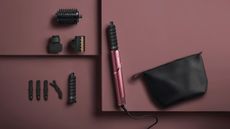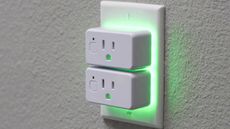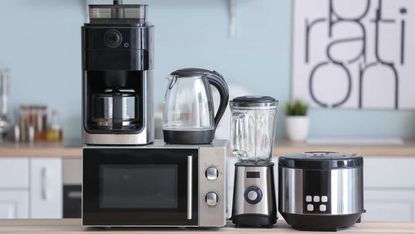Home Living
The latest Home Living breaking news, comment, reviews and features from the experts at T3
Explore Home Living
-

This Jamie Oliver air fryer hack will massively upgrade your Christmas leftovers
Take your Boxing Day leftovers to the next level with this Jamie Oliver-recommended hack
By Bethan Morgan Published
-

3 Christmas foods you should never cook in an air fryer
Just because you can cook Christmas lunch in an air fryer, doesn’t mean you should…
By Bethan Morgan Published
-

Le Creuset launches rainbow gift sets right before Christmas – I wish I’d known about them sooner!
Le Creuset’s new rainbow gift sets are on my Christmas wishlist
By Bethan Morgan Published
-

3 clever ways to incorporate smart home gadgets into your Christmas quiz
Turn your Christmas quiz into a game show with these fun tips
By Lizzie Wilmot Published
-

I tried Woojer’s wellness mattress topper to improve my sleep and recovery – but was it worth the cost?
I slept on the Woojer MAT for weeks to see if it helped my sleep and restfulness
By Lucy Miller Published
-

3 tips for organising your fridge before Christmas, according to appliance experts
How to keep your fridge in top condition during the festive season
By Bethan Morgan Published
-

Best hair straighteners 2025: for sleek, frizz-free hair
Our top picks for envy-worthy locks
By Lizzie Wilmot Last updated
-

Your Samsung smart fridge is getting a Google Gemini upgrade
Samsung announces its CES 2026 plans, including an exciting Gemini debut
By Bethan Morgan Published
-

Shelly introduces new Wall Display smart home hub for remote device control
It follows the launch of the Wall Display XL, which arrived back in September
By Lizzie Wilmot Published
-

5 last-minute gift vouchers you can still grab before Christmas
Missed someone off your Christmas list? Don’t panic – we’ve got you sorted
By Lizzie Wilmot Published
-

Best Christmas Gifts 2025: luxury picks for the people who already have everything
If you’re finding it hard to pick a gift, these trending picks should help point you in the right direction
By Lizzie Wilmot Last updated
-

Samsung SmartThings gets Matter 1.5 update and it’s good news for your security cameras
Samsung SmartThings now supports Matter 1.5
By Bethan Morgan Published
-

Your Christmas lights could be slowing down your WiFi – here are 5 easy ways to fix it
Outdated components can mess with your connection
By Lizzie Wilmot Published
-

Subscription-free smart home gadgets explained: are there hidden costs?
It sounds very appealing, but there are still a few things worth knowing about
By Lizzie Wilmot Published
-

Your Ring video doorbell can now greet visitors with personalised responses, thanks to Alexa+
Amazon has upgraded its Ring doorbells with Alexa+ Greetings feature
By Bethan Morgan Published
-

Reolink prepares to unveil rumoured triple-lens camera series at CES
The brand has described the launch as a "groundbreaking lineup"
By Lizzie Wilmot Published
-

4 smart cooking tech must-haves for a stress-free Christmas dinner
Getting the perfect turkey doesn't have to be hard
By Max Slater-Robins Published
-

Expert reveals the unexpected reason why you should never dry towels in the bathroom
It’s a major factor behind why dehumidifiers are so needed
By Lizzie Wilmot Published
-

6 superfoods you should be eating to avoid the winter flu, according to fitness experts
From black garlic to raw honey, these superfoods can boost your immunity this winter
By Bethan Morgan Published
-

Can I dry clothes with a dehumidifier? Yes, and here’s how to get the best results
How to dry your clothes using a dehumidifier
By Bethan Morgan Published
-

Shark just launched its FlexStyle in a stunning burgundy winter edition
It would make the perfect Christmas gift for any beauty lover
By Lizzie Wilmot Published
-

11 best Christmas gift ideas for budding chefs and home cooks
Upgrade your kitchen with these luxury Christmas gifts
By Bethan Morgan Published
-

Shelly’s most advanced smart plug is here – its compatibility and price is hard to beat
Shelly launches its most advanced smart plug yet
By Bethan Morgan Published
-

Dyson Hot+Cool HF1 review: the 2-in-1 appliance that's earned a spot on my bedside table
Could this be the best bedside fan heater we've seen?
By Lizzie Wilmot Published
-

Best electric shaver 2025: top grooming options from Braun, Philips and more
Reduce stubble to rubble with the best electric shavers from Braun, Philips and other brands
By Lizzie Wilmot Last updated
-

Best cordless lawn mower 2025: top battery-powered trimmers that tackle all types of turf
Replace your rusty old mower and embrace the time-saving pleasures of the best cordless lawn mowers
By Lizzie Wilmot Last updated
-

Philips has just given its 3000 Series smart lock a cool hands-free upgrade
Philips has teamed up with Durin to give its 3000 smart lock hands-free entry
By Bethan Morgan Published
-

Your Tado smart thermostat just got new feature that makes it easier to control your hot water
Tado introduces new Hydronic Balancing feature
By Bethan Morgan Published
-

Peak Design Travel Backpack 45L review: the most organised carry-on bag I’ve tested
The brand's most ambitious travel backpack yet, for travellers who like everything in its place
By Matt Kollat Published
